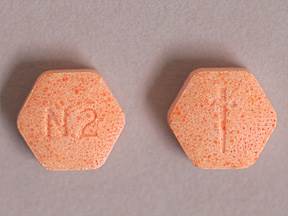Momentum is building for legislation to broaden access to buprenorphine and methadone, the lifesaving medications for opioid use disorder. Its impact would be felt particularly in rural areas with few providers. COVID-19 adaptations previously began to dismantle the X-waiver that has severely restricted buprenorphine prescribing, and to the lower the barriers to take-home methadone doses. Now, legislation to further loosen restrictions has advanced in Congress, and new data add weight to calls to free methadone.
A JAMA study published July 13, authored by researchers from the Centers for Disease Control and Prevention and the National Institute on Diseases of Addiction, found no risk associated with “permanently expanding take-home methadone.” Supposed dangers of “diversion” have routinely been cited by opponents of expanded acccess. The research strengthens the case for the Opioid Treatment Access Act of 2022, introduced in the House and Senate in February, which would lower methadone barriers—although the bill has been criticized for not going further, by eliminating the repressive clinic system altogether.
Early in the pandemic, the Substance Abuse and Mental Health Services Administration expanded the eligibility requirements for unsupervised methadone dosing, allowing state-level exemptions for clinics to dispense 28-day supplies to patients deemed “stable” and 14-day supplies at clinics’ discretion.
Though the updated guidance was intended to slow the spread of COVID-19, its impact in increasing access or reducing transmission among patients at highest risk of either COVID-19 or overdose was severely limited. Cinics weren’t actually required to use it; many were not inclined to, especially in states where Medicaid covers methadone maintenance as fee-per-service. Methadone delivery vans vans rolled out in places, but to very few patients.
The Opioid Treatment Access Act would allow eligible providers to prescribe up to a one-month supply that patients could take home from a pharmacy. It would also remove a requirement that methadone clinics pursue a separate registration in order to operate delivery vans.
The Act is part of the Restoring Hope for Mental Health and Well-Being Act, a broader package of bills that also includes the Mainstreaming Addiction Treatment Act of 2021. The MAT Act passed the House on June 22. A companion bill in the Senate has yet to advance.
Eliminating the X-waiver
The legislation would also eliminate the X-waiver for DEA-licensed buprenorphine providers, and authorize other eligible providers to prescribe bupe for opioid use disorder (OUD) through telehealth appointments.
Since the Food and Drug Administration approved buprenorphine for OUD in 2002, outpatient providers have been required to obtain the waiver in order to prescribe it to such patients. No other medication has an X-waiver, and many providers have avoided prescribing bupe for OUD due to both the stigma associated with the waiver and the difficulty of getting it.
“The main issue is lack of provider availability,” Aaron Ferguson, of the Urban Survivors Union, told Filter. “That has less to do it seems with regulation than it does with doctors just not wanting to prescribe it. Not wanting to work with people who use drugs.”
Like integrating methadone into primary care, eliminating the X-waiver is a logical goal in increasing access.
Eliminating the X-waiver won’t erase the stigma on its own, but it would be a monumental step forward.
Prior to April 2021, DEA-licensed providers were required to take a minimum eight-hour online course and provide psychosocial services in order to be able to prescribe bupe to up to 30 OUD patients. There were additional requirements for later raising the patient cap to 100, and still more to reach the maximum of 275. Very few providers prescribe to their full capacity.
In April 2021, the Department of Health and Human Services released new clinical practice guidelines that allowed eligible practitioners to prescribe bupe to up to 30 OUD patients without the online training or provision of ancillary services.
Though the X-waiver still applies to providers who want higher patient caps, the update made it easier for DEA-licensed physician assistants, nurse practitioners, clinical nurse specialists, certified registered nurse anesthetists and certified nurse midwives to prescribe it.
Like integrating methadone into primary care, eliminating bupe’s X-waiver is a logical goal in increasing access to medications that dramatically reduce mortality for people with OUD. No longer singling the medications out for restrictions will lift the aura of criminality around them—and thus, the people who take them.
Photograph via State of Connecticut





Show Comments